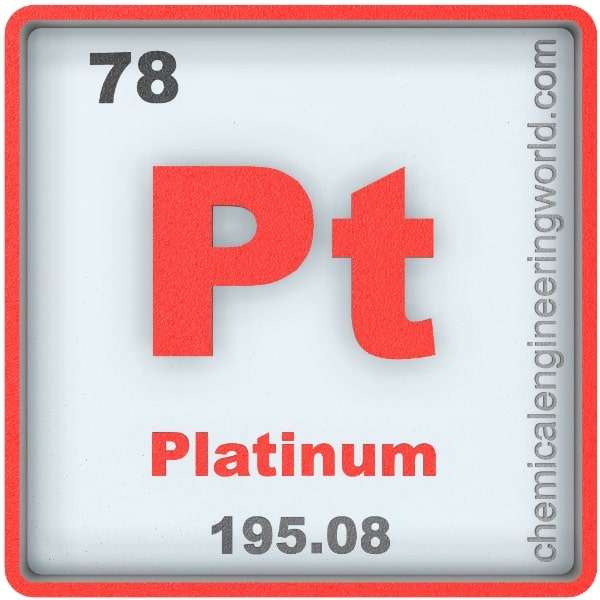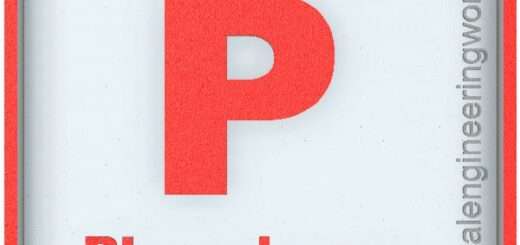Platinum Element Properties and Information

Platinum Element Properties and Information
Platinum is 78th element on the periodic table. Elements are arranged in the periodic table on the basis of the atomic number. Atomic number is the number of protons in the nucleus of the atom. Platinum has an atomic number of 78. It is located in the Group 10 and Period 6 of the periodic table of elements. It is denoted by Pt. The name is derived from the Spanish word ‘Platina’ which means ‘Little Silver’.
Platinum is one of those metals which has been known and worked with since ancient times. Platinum was reported and discussed throughout the Europe since 1735 when Royal Navy siezed a ship and brought it to London. Antonio Ulloa had that new metal with him aboard the ship which later was referred to as platinum.
Platinum is one among the group of extremely rare metals. It occurs at a concentration of 5 ppb or 0.005 ppm in Earth’s crust. Platinum is found in nature in a combined as well as uncombined state. It is generally found combined with all platinum-group of metals, mostly iron.
Physical Properties
- Platinum is a malleable and ductile metal which has lustrous silver-white appearance.
- The atomic mass of platinum is 195.09.
- The melting point of platinum is 1772°C.
- The boiling point of platinum is 3800°C.
- The density of platinum is 21400 in S.I. units at 20°C.
- Platinum is quite stable at high temperatures and has stable electrical properties as well.
- Platinum is paramagnetic in nature.
- Platinum has 6 naturally occurring isotopes; platinum-190, platinum-192, platinum-194, platinum-195, platinum-196, and platinum-198.
Chemical Properties
- Platinum metal has excellent resistance to corrosion.
- At 500°C, a layer of oxide forms on platinum but it is easily removable.
- The most common oxidation states of platinum are +2 and +4.
- Platinum is capable of reacting with and forming varieties of halides, oxides, and organometallic compounds.
Methods of Production
Purification & separation: Platinum containing ore is crushed and subjected to impurity separation processes. Platinum is quite dense, hence many impurities can be removed through flotation method. Then via magnetic separation method ferromagnetic impurities are removed from the lot. Also the very high heat is used to burn away impurities because platinum has a high melting point. The processed materials are then brought in contact with hydrochloric acid as platinum itself is corrosion-resistant, this step dissolves some more purifies. Platinum is separated from other platinum-group metals, silver, and gold via Aqua-Regia, by this step platinum gets precipitated.
Relevance in Chemical and Related Industries
Catalyst: Platinum is most commonly used as a catalyst. Platinum black is used to catalyse ignition of hydrogen. Platinum oxide, a.k.a Adam’s catalyst is used as a hydrogenation catalyst in food and petroleum industries. Platinum catalyses decomposition of hydrogen peroxide into hydrogen & water and is also used in fuel cells to reduce oxygen.
Relevance in Other Industries
- Jewellery: Large amounts of platinum is used in jewellery. The alloy usually contains atleast 90-95% of platinum.
- Medicine: Platinum containing drugs are used to treat variety of cancers; melanoma, ovarian carcinoma, lymphomas, lung cancer, myelomas, etc.
Health Effects on Exposure
Salts: Platinum metal by itself is not very dangerous and often helpful in treatment of cancer but platinum salts pose danger to health. The salts are liable to cause allergy, damage to organs, and cancer.
Effects on Surroundings
- Plants: The concentration of platinum increases in the plant and crop body if platinum is present in excess in soil. Eating those plants and crops harms health of animals and humans.
- Micro-organisms: Some micro-organisms are able to take platinum present in soil and able to convert them into more harmful substances.
References:
https://en.wikipedia.org/wiki/Platinum
https://www.lenntech.com/periodic/elements/pt.htm
https://www.rsc.org/periodic-table/element/78/platinum
































